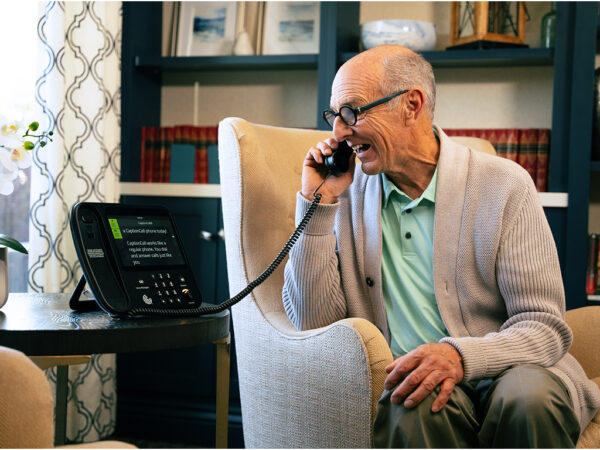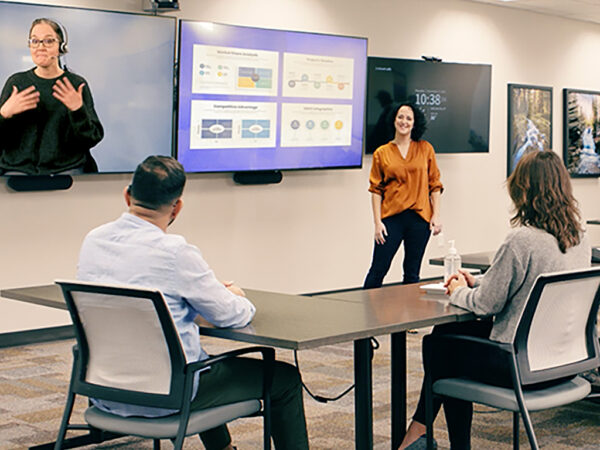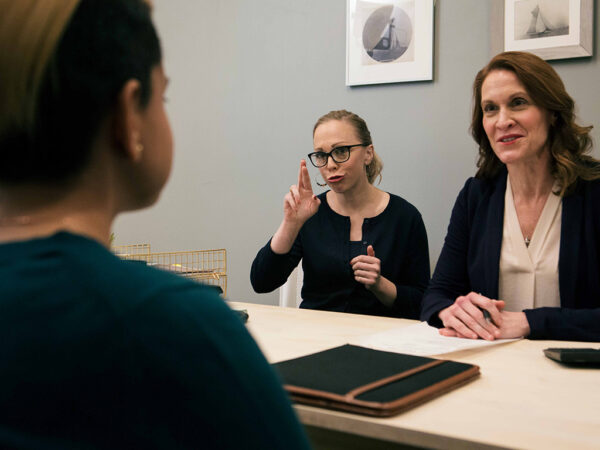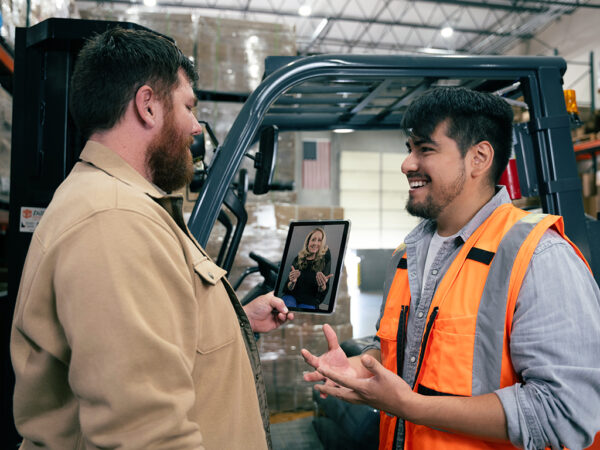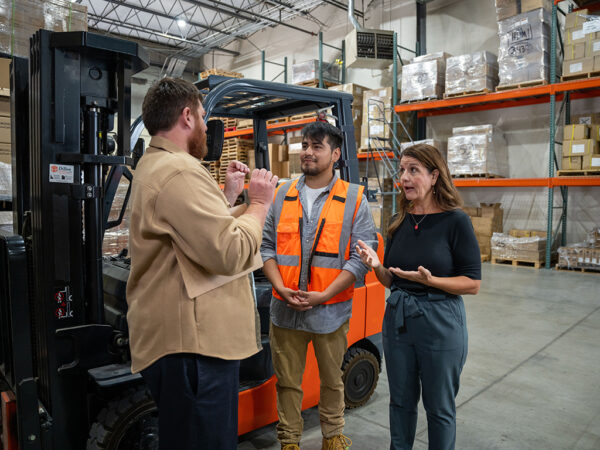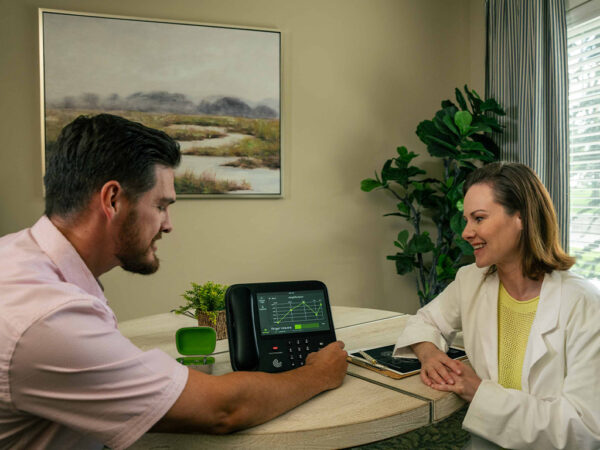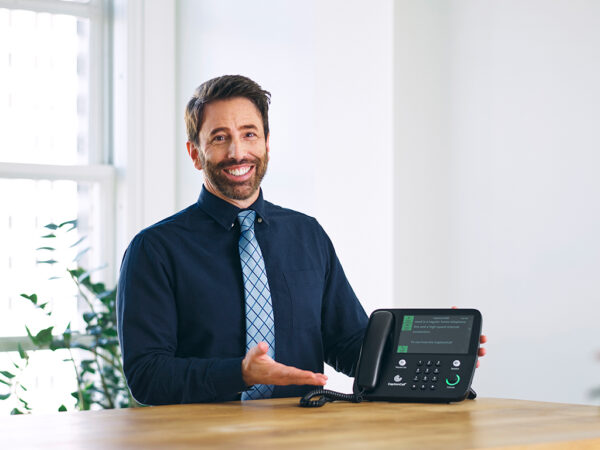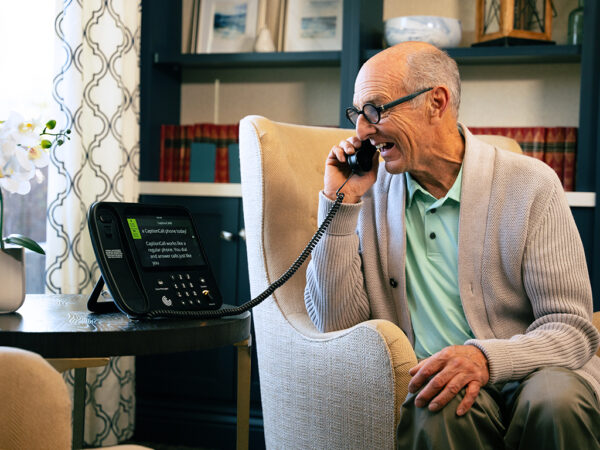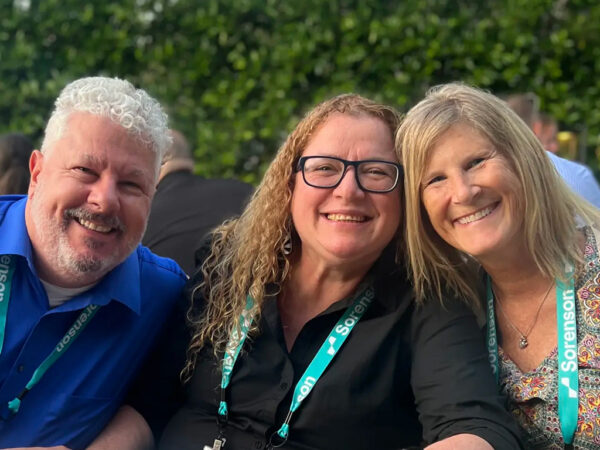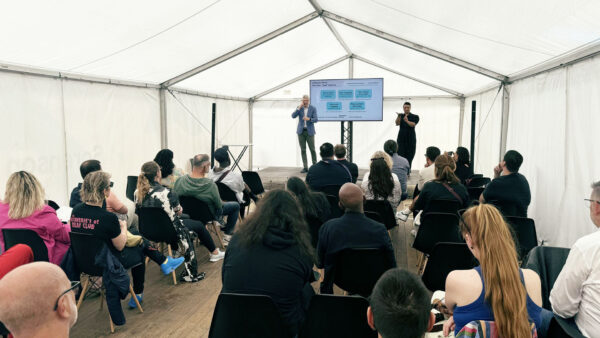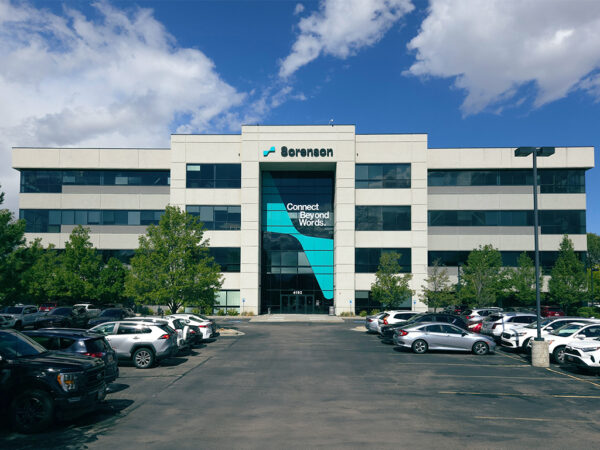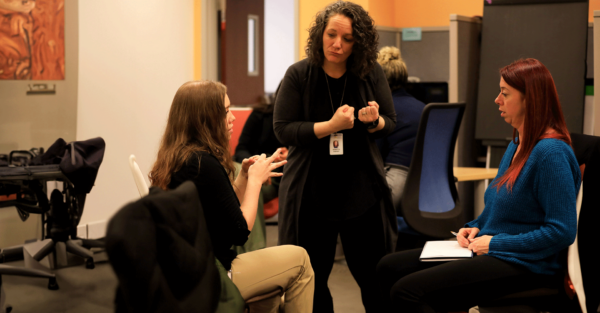Guide to Hiring a Deaf Employee
December 19, 2022

Considering the estimated 38K deaf individuals in American workforce, it’s important for your business to take a look at how it supports deaf employment. Part of building an inclusive work environment is strengthening relationships with deaf employees and employees with hearing loss. But how can you support a deaf employee in their job function? The best thing you can do is educate yourself on hearing disabilities, resources, and workplace requirements and stay up-to-date on new developments in communication resources. Once you’ve become more knowledgeable about deaf employment, it’s easier than you might think to provide the reasonable accommodations for every employee to succeed.
Deaf employment opportunities
Once you’ve familiarized yourself with the different accommodation and communication options — more on that below — you may realize there are actually a lot of jobs in your organization that Deaf or hard-of-hearing (sometimes written as hard of hearing or HoH) people can do, and do well. At that point, it becomes less about how the candidate would even perform certain tasks such as talking on the phone and more about the basic job qualifications — do they have the education and skills that the job requires — and how they meet your other criteria such as passion, energy, and organizational fit. This opens up many more employment opportunities for Deaf and hard-of-hearing people than currently exist.
Learn about accommodations for deaf employees
Under the Americans with Disabilities Act (ADA), employers are responsible for providing reasonable accommodations to facilitate effective communications with people who are Deaf or hard of hearing. Moreover, it is against the law to turn down an applicant solely because they are deaf.
The potential in hiring a deaf employee includes tangible business outcomes.
- Studies show 61% of employers considered productivity a benefit of hiring people with disabilities.
- Companies employing people with disabilities experienced 28% higher revenue and 111% higher net income.
Despite these statistics, deaf applicants still sometimes experience discrimination from employers who have misconceptions about hiring a deaf employee or misunderstand what the ADA requires. From 2008 to 2017, deaf people consistently had an employment rate over 20% lower than their hearing peers. Most commonly, organizations needlessly worry that providing accommodations for deaf employees will add costs that offset the benefits of a new hire. However, deaf workers and their employers can use a wide variety of ways to communicate, including options with no associated costs.
Know communication options for deaf employment
Making “reasonable accommodations” when hiring a deaf employee can range from providing a full-time sign language interpreter to simple adjustments in company culture. Oftentimes, you can use a combination of multiple solutions to support communication and effective work between deaf and hearing colleagues.
Using an interpreter
A sign language interpreter enables people who are deaf and hearing to understand each other by converting statements between spoken language and sign language. Interpreting is available in-person or remotely over video using convenient technology.
With organizations like Sorenson, you can schedule interpretation services in both English and Spanish for on-site interpreting or use Video Remote Interpreting (VRI) Services. Additionally, Sorenson Express: On-Demand Video Interpreting provides even more deaf employment support for impromptu discussions and scenarios that unexpectedly require a sign language interpreter.
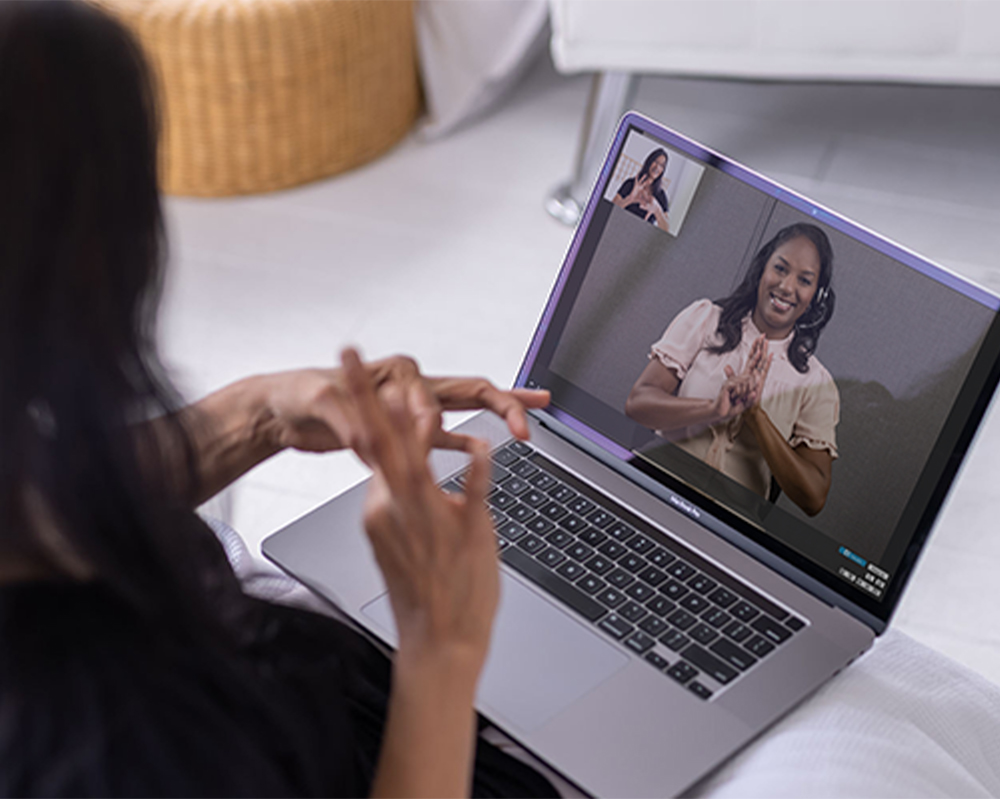
If your business is remote-first, in addition to Sorenson Express for virtual meetings, your deaf employees may also use Sorenson VRS for Zoom. Your employee may already be registered with Sorenson’s Video Relay Service (VRS) for no-cost interpreted phone calls, but if not, you can obtain Sorenson Relay for them. The Sorenson for Zoom VRS integration is a first-of-its-kind product that enables a VRS user to invite highly skilled Sorenson sign language interpreters directly into Zoom calls so everyone can see meeting attendees and interpreters on one screen. A deaf employee can be fully engaged during meetings and not constantly looking back and forth between two screens, missing words or shared on-screen content.
Captioning
Captioning can be an effective communication tool for Deaf and hard-of-hearing employees in both live and pre-recorded situations. In fact, the use of captions during large group settings, meetings, and trainings benefits everyone. Even those without any degree of hearing loss can appreciate this speech-to-text solution as another way to absorb information and understand content. In studies, the use of captions improved comprehension and memory of material regardless of hearing ability. CART (Communication Access Real Time) Captioning from Sorenson makes use of live captioning agents who produce high-quality, real-time captions with high accuracy and account for accents, terminology, and slang.
For roles where employees spend substantial amounts of time on the phone, CaptionCall and CaptionCall Mobile app by Sorenson are also options. These no-cost call captioning services help Deaf or hard-of-hearing individuals who prefer to voice for themselves but need captions of the other side of the call to confidently use the phone. CaptionCall transcribes phone conversations and displays them on a specially designed phone with a large touch screen. Alternatively, CaptionCall Mobile is a smartphone app that captions calls on a mobile phone. (Users must self-certify their need for captioned phone calls to use these FCC-funded services)
Written communications
While captioning is an excellent real-time solution for communications, providing written communications before or after meetings can also go a long way. Written transcripts, presentations, notes, or summaries of various company communications benefits hearing, hard-of-hearing, and deaf employees alike.
Digital communications
Effective communication among deaf and hearing employees is literally at your fingertips. Texting, instant messages, and email are quick, efficient ways to get work done. A variety of messaging options, such as Slack and Microsoft Teams chat, can engage all employees.
Another digital option for written communications is the Sorenson BuzzCards app, which lets anyone write an easy-to-read note on the fly. Available in the App Store and Google Play, the app works like a deck of flashcards. You type the message and show it to the person with whom you are communicating. You can even save cards for future use with the messages you use the most. BuzzCards are a friendly, informal way for employees and customers to share quick messages.
How to implement new strategies after hiring a deaf employee

Once you’re familiar with the many communication options available, put them to work during your first meeting with a Deaf or hard-of-hearing individual. Then, continue to build comfort levels, iterate, and improve where necessary.
Find a shared comfort level
When hiring a deaf employee, don’t assume what they need. It’s acceptable, respectful, and easy to ask about their preferred methods of communication. Since everyone is different, individuals can have varying needs and preferences. As part of onboarding, consider discussing the most effective options for company-wide meetings, team updates, colleague interactions, employee reviews, and individual workspaces. Create a straightforward process for requesting alternative communication solutions as other occasions arise. The more you communicate up front, the better workplace communications will be over time.
Make accommodations for deaf employees right away
Schedule an on-site interpreter, use Video Remote Interpreting (VRI) Services, or plan for their preferred communication starting on a deaf employee’s first day. It will show the character of your work culture and make your new employee feel more welcome, as well as help the whole team effectively communicate. Additionally, they will experience smoother onboarding as they easily absorb new-hire information in a way that works for them.
Engage everyone
Don’t think that the HR department is the only party in the company involved with accommodations for deaf employment. Make a point of explaining and embracing new communication efforts throughout the company. You might try engaging hearing employees for additional deaf employment support. Consider internal sign language classes, inviting mentorships between Deaf and hearing individuals, and providing communication tips and free apps to talk with co-workers.
Some tips to share company-wide for making communication between deaf and hearing colleagues smoother include:
- Recording meetings. It can be difficult for deaf employees to take notes while watching an interpreter or reading captions. Even if they’re not taking notes, it’s still possible for them to miss phrases or expressions in conversation. Having a recording they can refer to is likely to be helpful for your deaf and hearing team members alike.
- Raising hands before speaking. This allows interpreters to switch narrations and allow users to easily identify who is speaking.
- Turning cameras on during virtual meetings. A deaf employee that can lip read will appreciate seeing everyone on camera. Those who can’t lip read can still pick up social cues through facial expressions.
A more inclusive workplace with deaf employment support
Beyond hiring, employers should implement practices that encourage and uplift persons with disabilities, including Deaf and hard-of-hearing individuals. As the worldwide leader of inclusive technologies for deaf and hearing connection, Sorenson makes it easy for your business to get started. Supporting your team with inclusive communication can make an enormous difference in their daily lives — regardless of the language they use. Sorenson taps into the power of language to remove barriers and allow diverse human relationships to thrive.









